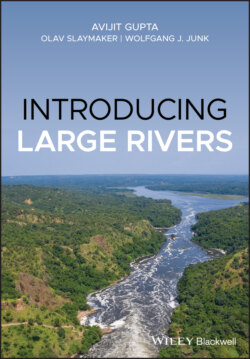Читать книгу Introducing Large Rivers - Avijit Gupta - Страница 27
3.6 Conclusion
ОглавлениеExistence of a large river requires a considerable amount of water and sediment. For this, its drainage basin needs to be big enough to collect a necessary volume of water, large enough to nourish the main stream. At least part of the basin should be in an area of high rainfall so that the main river can be sustained all along its course. The volume of discharge may be annually seasonal, and also may vary over a group of years as directed by climate drivers such as ENSO. The drainage basin may contain sources of high sediment production which commonly comes from a high relief and erosive fold mountain. Sediment grains in long rivers tend to demonstrate size-sorting and quartz enrichment in the downstream direction. Many large rivers transport and store sediment also in a lateral direction, producing dynamic growth and decay of floodplains. Very large volumes of water and sediment are generally needed to sustain large rivers but the patterns of their supply and distribution are different.
